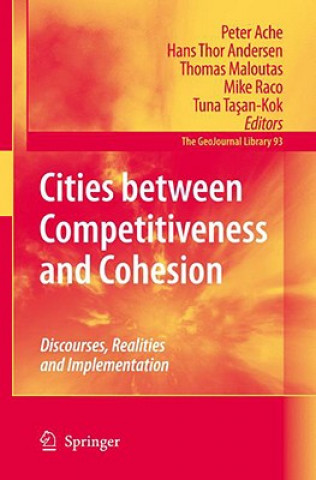
Kód: 04194701
Cities between Competitiveness and Cohesion
Autor Peter Ache
The central aim of many analyses in population studies and demography is to explain cause-effect relationships among variables or events. For decades, population scientists have concentrated their efforts on estimating the causes ... celý popis
- Jazyk:
 Angličtina
Angličtina - Vazba: Pevná
- Počet stran: 306
Nakladatelství: Springer-Verlag New York Inc., 2008
- Více informací o knize

5094 Kč

Skladem u dodavatele v malém množství
Odesíláme za 12-15 dnů
Potřebujete více kusů?Máte-li zájem o více kusů, prověřte, prosím, nejprve dostupnost titulu na naši zákaznické podpoře.
Přidat mezi přání
Mohlo by se vám také líbit
-

Classifying Madness
3313 Kč -

Wealth of Buildings: Marking the Rhythm of English History
3313 Kč -
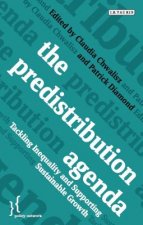
Predistribution Agenda
4606 Kč -
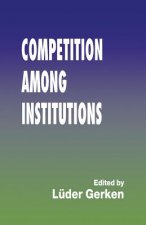
Competition among Institutions
5094 Kč -
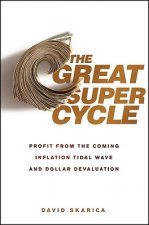
Great Super Cycle
659 Kč -

2-D and 3-D Image Registration for Medical, Remote Sensing and Industrial Applications
4368 Kč -

Breakers
283 Kč
Dárkový poukaz: Radost zaručena
- Darujte poukaz v libovolné hodnotě a my se postaráme o zbytek.
- Poukaz se vztahuje na celou naši nabídku.
- Elektronický poukaz vytisknete z e-mailu a můžete ihned darovat.
- Platnost poukazu je 12 měsíců od data vystavení.
Více informací o knize Cities between Competitiveness and Cohesion
Nákupem získáte 509 bodů
 Anotace knihy
Anotace knihy
The central aim of many analyses in population studies and demography is to explain cause-effect relationships among variables or events. For decades, population scientists have concentrated their efforts on estimating the causes of effects (e.g. What accounts for the decline of fertility rates? ) by applying standard cross-sectional and dynamic regression techniques, with regression coefficients routinely being understood as estimates of causal effects. The standard approach to infer the effects of causes (e.g. What is the effect of women s labour force participation on fertility? ) in natural sciences and in psychology is to conduct randomised experiments. In population studies, experimental designs are unfeasible. Nevertheless, quasi or natural experiments are sometimes performed to estimate treatment effects. However, most research is based on non-experimental designs (also called observational or survey designs).§Inferring the effects of causes or treatment effects from other than experimental data is tricky. However, treatment effects can be inferred from non-experimental data with a counterfactual approach. In such a perspective, causal effects are defined as the difference between the potential outcome irrespective of whether or not an individual received a certain treatment (or experienced a certain cause). The counterfactual approach to estimate effects of causes from quasi-experimental data or from observational studies was first proposed by Rubin (1974). Other important contributions include the work of James Heckman and collaborators and of Charles Manski and collaborators.
 Parametry knihy
Parametry knihy
Zařazení knihy Knihy v angličtině Society & social sciences Society & culture: general Social groups
5094 Kč
- Plný název: Cities between Competitiveness and Cohesion
- Podnázev: Discourses, Realities and Implementation
- Autor: Peter Ache
- Jazyk:
 Angličtina
Angličtina - Vazba: Pevná
- Počet stran: 306
- EAN: 9781402082405
- ISBN: 1402082401
- ID: 04194701
- Nakladatelství: Springer-Verlag New York Inc.
- Hmotnost: 1390 g
- Rozměry: 235 × 155 × 23 mm
- Datum vydání: 04. May 2008
Oblíbené z jiného soudku
-

Women Who Run with the Wolves
238 Kč -

Freedom Writers Diary
389 Kč -

Think Like a Monk
294 Kč -

Orientalism
323 Kč -
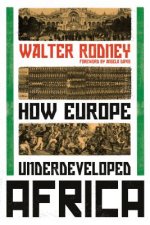
How Europe Underdeveloped Africa
514 Kč -

Desert Flower
278 Kč -
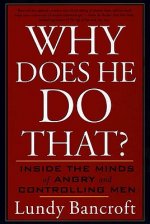
Why Does He Do That?
427 Kč -

Letters to a Young Muslim
303 Kč -

Eros and Mysteries of Love
425 Kč -

Life After Darkness
520 Kč -

Puer Tea
937 Kč -

Womanhood
544 Kč -

JFK - 9/11
739 Kč -

Complete Book of Pilates for Men
447 Kč -

Gypsy Identities 1500-2000
1666 Kč -

Servitors of Empire
498 Kč -

Sword of No-sword
646 Kč -

Colloquial Yiddish
1683 Kč -
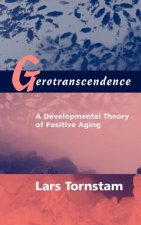
Gerotranscendence
3525 Kč -

Northwest Coast Indian Art
721 Kč -

Qur'an
811 Kč -

When God Was A Woman
495 Kč -

The Mastery of Love
309 Kč -

Vintage Menswear
456 Kč -

Who Cooked the Last Supper?
427 Kč -

Women Who Run With The Wolves
433 Kč -

The Way of Men
334 Kč -

The Autobiography of Malcolm X
226 Kč -

Second Sex
284 Kč -

Goddesses in Everywoman
303 Kč -

Talking with Female Serial Killers - A chilling study of the most evil women in the world
276 Kč -

Intellectuals and Society
538 Kč -

Women in the Qur'an
493 Kč -

Erotic Bondage Book
366 Kč -

Zami
276 Kč -

Nine Years among the Indians, 1870-1879
617 Kč -

Dark Emu
410 Kč -
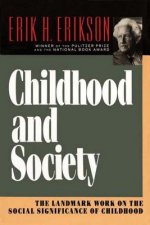
Childhood and Society
394 Kč -

Happy City
303 Kč -

The Male Nude
505 Kč -
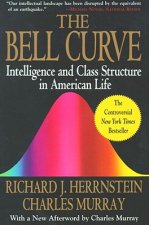
The Bell Curve
464 Kč -

We Should All Be Feminists
196 Kč -

Empire of the Summer Moon
357 Kč -

Radium Girls
276 Kč -

Dance of Anger
276 Kč -

Beauty Myth
357 Kč -

Muqaddimah
542 Kč -

TROUBLEMAKER
376 Kč -
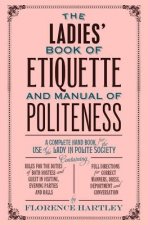
Ladies' Book of Etiquette and Manual of Politeness
317 Kč
Osobní odběr Praha, Brno a 12903 dalších
Copyright ©2008-24 nejlevnejsi-knihy.cz Všechna práva vyhrazenaSoukromíCookies


 Vrácení do měsíce
Vrácení do měsíce 571 999 099 (8-15.30h)
571 999 099 (8-15.30h)